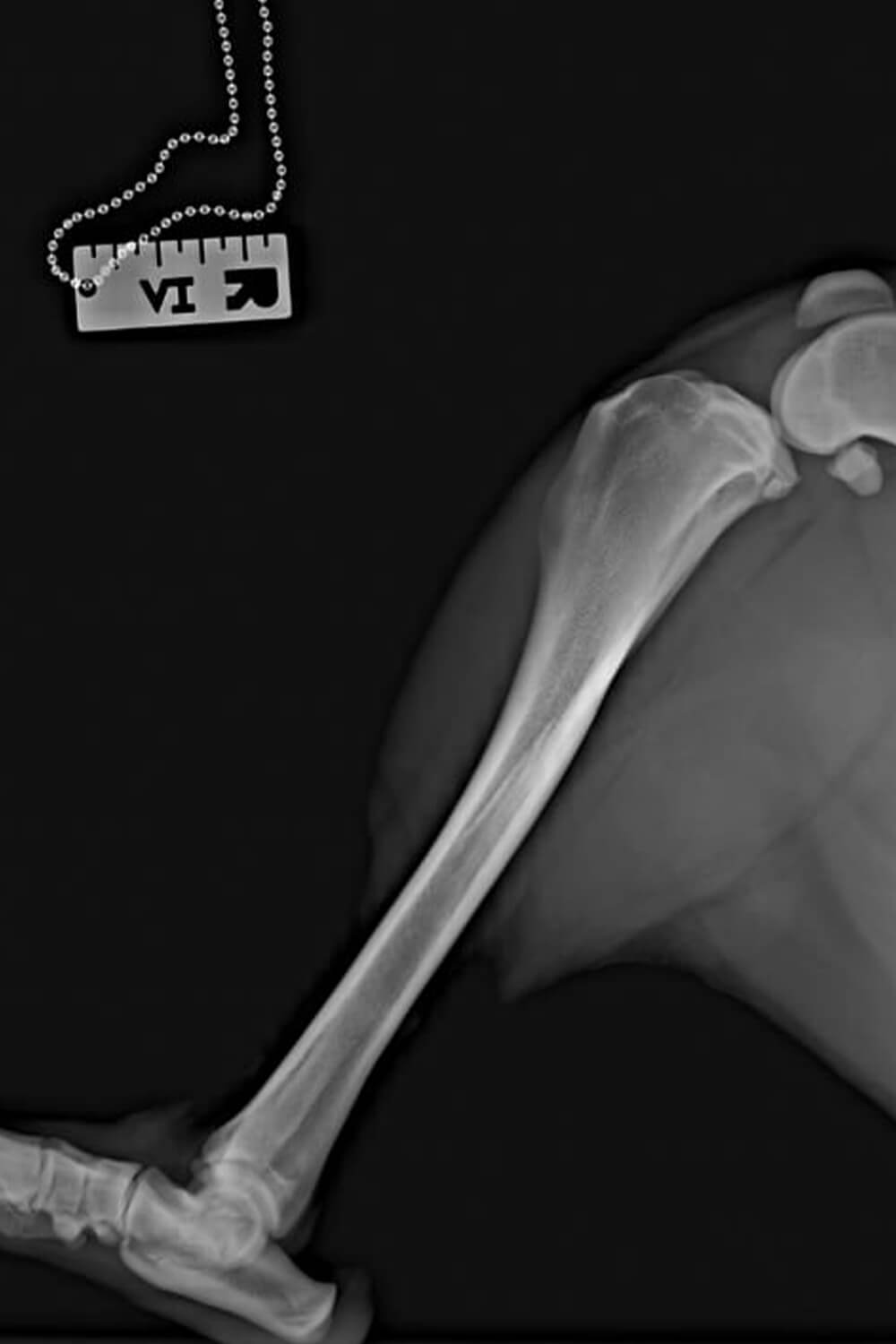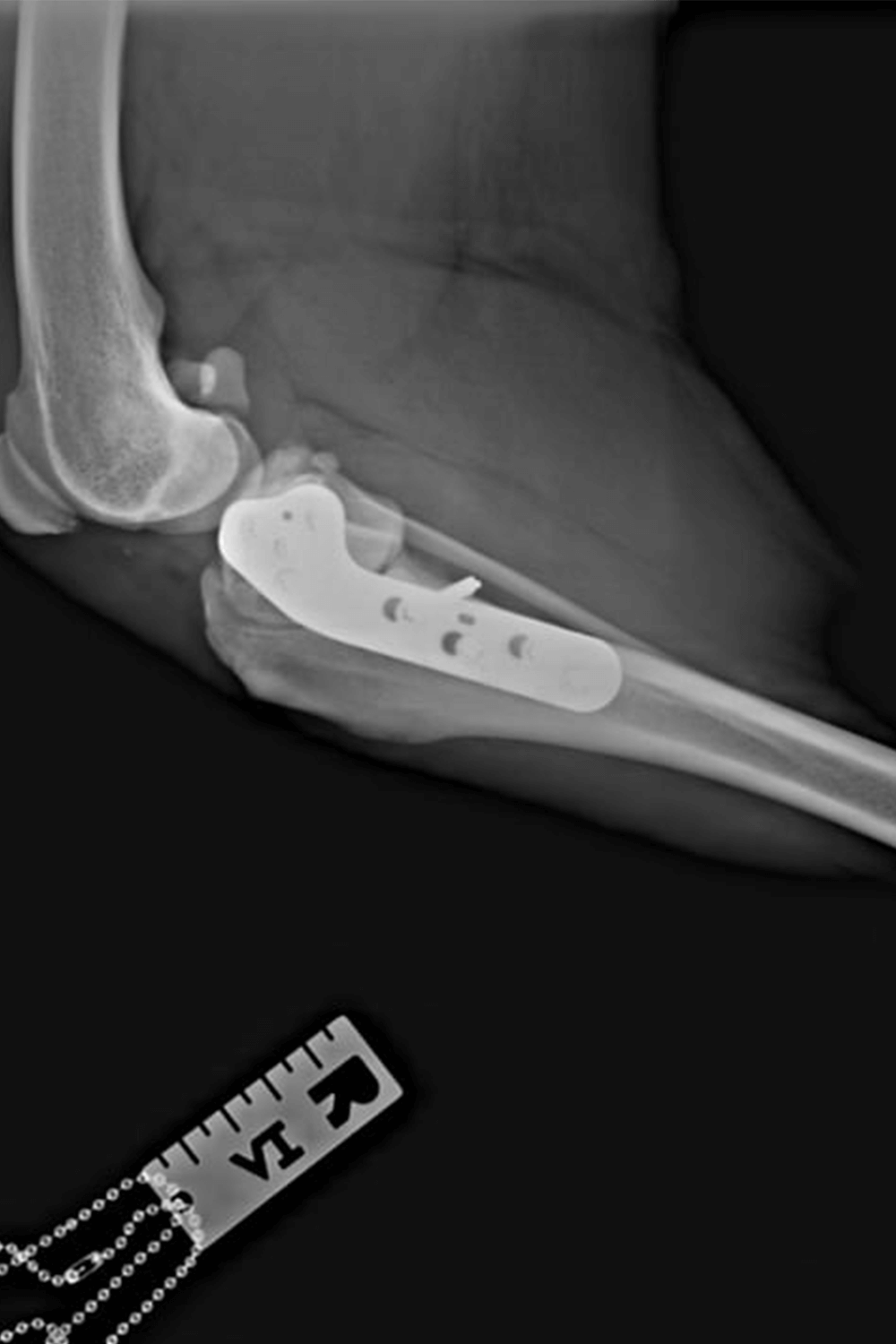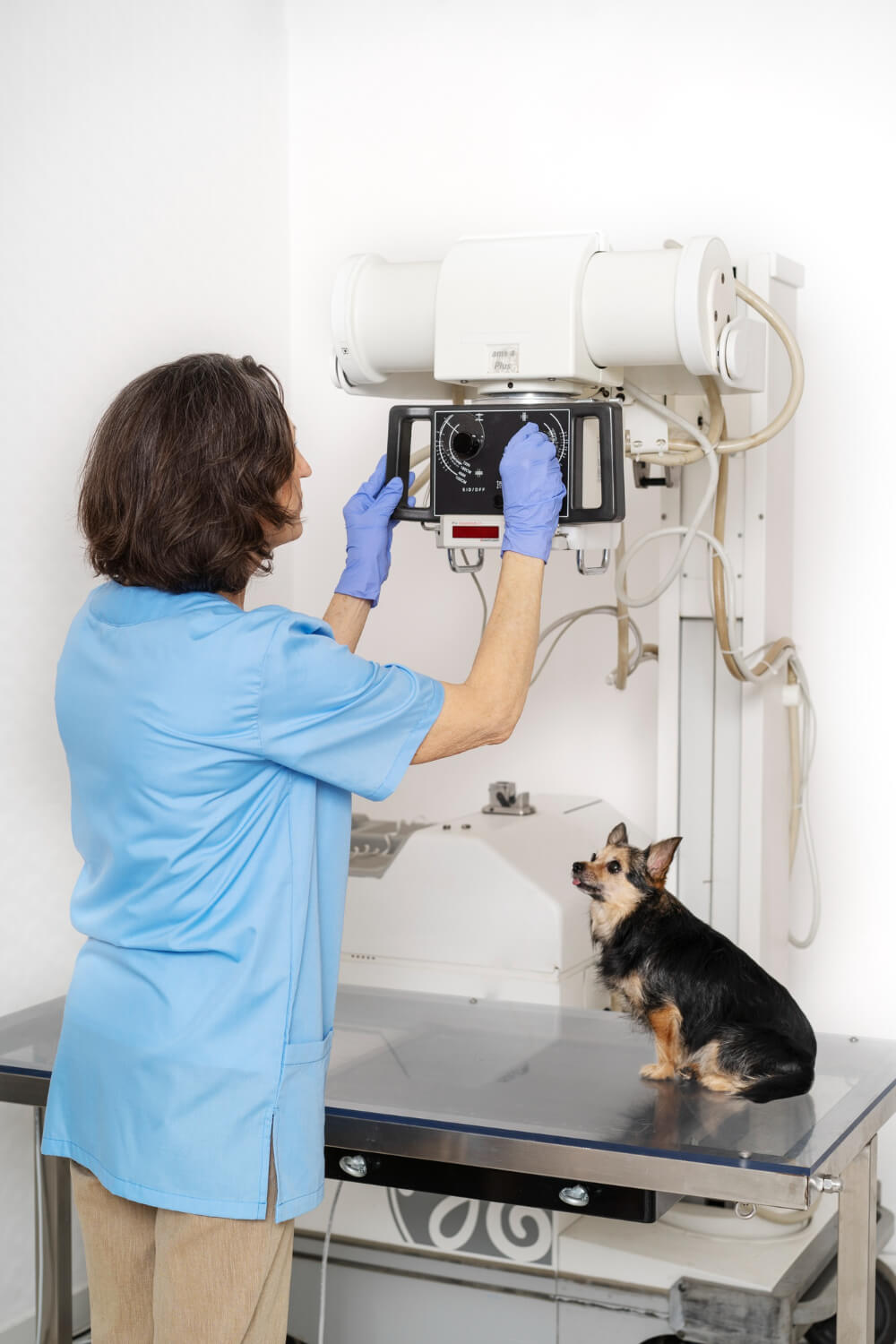Cruciate Repair/TPLO in Chantilly, VA
Also Serving South Riding, Aldie, Ashburn, Centreville, Reston And Herndon

LifeCare Pet Hospital has been providing the best price point and quality care for TPLO patients since 2019. Currently, TPLO is the most common and frequent surgery being performed (by staff veterinarian Dr. Sudhir Ahluwalia DVM, PhD) at LifeCare Pet Hospital.
The most common knee injury for dogs is a ruptured cranial cruciate ligament (CCL), referred to as the anterior cruciate ligament (ACL) in humans. Although dogs of all ages and sizes can rupture the CCL, our most common patients are middle-aged to older and are often overweight. When a dog ruptures the CCL, the knee joint becomes unstable and painful, which leads to limping.
If your dog is suffering from a CCL rupture, it is important to receive surgical treatment as early as possible. Delaying treatment can lead to further joint damage, including meniscal tears, worsening arthritis/pain, and a similar injury in the other leg caused by overuse and requiring cruciate repair as well.
We know how important it is to get your pet the care they need quickly, especially when dealing with a cruciate injury. That’s why we aim to schedule appointments and surgery repairs, like TPLO procedures, within 1-2 weeks. Our team at LifeCare Pet Hospital is here to support you and your pet every step of the way. Give us a call to schedule—we’re ready to help your pet get back to all four paws!
As of July 2023, we’ve performed 450 TPLO surgeries on both dogs and cats—yes, cats too! Pet parents travel from near and far to our hospital, with distances ranging from 7 miles to as much as 189 miles away.
What is the Cranial Cruciate Ligament?
The cranial cruciate ligament (CCL), called the anterior cruciate ligament (ACL) in humans, is a tough band of tissue that connects the two main bones of the knee joint. The CCL attaches the upper bone (femur) to the lower bone (tibia) and helps prevent excessive motion between these bones.
Dog Cruciate rupture, Dog torn ACL, or Dog Torn CCL is the most common orthopedic injury in dogs and results in a painful and unstable joint. If left untreated, a ruptured CCL will lead to progressive and irreversible degenerative joint disease (arthritis) and Cruciate injury of the other leg as well. It’s a common myth to consider that a pet with a partial Cruciate tear will heal. All partial tears will eventually become full tears.
Why Did My Dog Rupture This Ligament?
There are generally two ways a dog’s cranial cruciate ligament can rupture. The first way is similar to a sports injury in people. Like a basketball player who plants his leg aggressively and then tears his ACL, a dog’s CCL may suddenly rupture from excessive force and leave the dog with an unstable and painful knee. Alternatively, a dog can experience years of normal “wear and tear,” leaving the ligament weak and prone to full rupture.
We don’t always know why or how a ligament ruptures. Some dogs begin limping after playing aggressively in the park, while others simply step off a curb and begin limping. Obesity appears to be one of the most important predisposing factors in CCL ruptures, however, as excess weight can cause further strain on ligaments. So watch those treats!
Why Does My Dog Need Surgery for Cruciate Repair?
When a dog ruptures a cranial cruciate ligament, the joint becomes unstable. When he places weight on his limb, there is a shearing force on the joint. This shearing force is not just painful but also potentially damaging to the cartilage (meniscus) in the joint. This abnormal shearing movement (called “tibial thrust”) predisposes the menisci (cartilage pads) to damage and promotes arthritic changes within the joint. These changes often become painful enough to render the limb mostly useless, especially in larger dogs.
Surgically repairing a knee joint after a CCL tear provides stability to the joint and thereby reduces the rate of future arthritic change. Plus, when one CCL ruptures, a dog will naturally transfer most of its weight to the other leg. In doing so, they inadvertently put the other CCL in danger of rupture due to overuse. If a dog has tears in both cranial cruciate ligaments, simple tasks such as rising off the floor, walking, and squatting to urinate or defecate become very difficult, and the dog’s quality of life may suffer.
Why Do Different Surgeons Recommend Different Procedures for Dog Cruciate Repair?
 For many years, different surgeons have advocated for different procedures to repair ruptured cranial cruciate ligaments. Historically, many procedures have been performed and have fallen out of favor as more research and technology have emerged to suggest these procedures were not as good as initially thought.
For many years, different surgeons have advocated for different procedures to repair ruptured cranial cruciate ligaments. Historically, many procedures have been performed and have fallen out of favor as more research and technology have emerged to suggest these procedures were not as good as initially thought.
As the veterinary industry learns more and more about cranial cruciate ruptures and repair options, there remain three procedures that consistently show the best results: Tibial Plateau Leveling Osteotomy (TPLO), Cranial Closing wedge Osteotomy (CCWO) and Tibial Tuberosity Advancement (TTA).
Each of these procedures has its pros and cons, and most recommendations are made from the surgeon’s personal preference in accordance with what is best for each individual patient. LifeCare Pet Hospital only offers TPLO.
What Are the Pros and Cons of the TPLO Procedure for Dog Cruciate Repair?
During TPLO surgery, the tibia is cut, repositioned, and stabilized in a new position that effectively changes the biodynamics of the joint so a cruciate ligament is no longer needed. The TPLO is a take on using the biomechanics of the knee to recreate stabilization.
It is a very effective surgery, especially for larger breed dogs. Quickly after TPLO, dogs will begin to use the limb again. In fact, in most cases, the dogs are weight-bearing literally the day of pet surgery, if not the next day. That said, if your dog does not use the leg for a few days… do not freak out, it is ok, and every dog is different.
I Have Been Told That My Dog May Eventually Rupture the Cranial Cruciate Ligament in the Opposite Leg. Is This True?
Yes, statistics tell us that 40-60% of the dogs that rupture one cranial cruciate ligament will eventually rupture the other one as well. This is likely multifactorial and partly caused by obesity, genetics, and continued wear and tear on the ligament over time.
What Can I Do to Lower the Chance My Dog Will Need Surgery in the Opposite Leg?
As previously stated, obesity is one of the most important contributing factors in cranial cruciate injuries. If your dog is currently overweight, then focus your efforts on a prescribed weight loss program. If you’re not sure if your dog is obese, simply ask your veterinarian and they’ll assess your dog’s current body condition score and will explain what it means for you and your dog.
What Can I Do to Speed up My Dog’s Recovery?
Just like with humans who undergo knee surgery to repair torn ACLs, dogs will benefit greatly from a physical therapy plan following surgery for a ruptured CCL. At LifeCare Pet Hospital, we provide just that.
After surgery, we’ll provide a customized 8 to 12 week physical therapy plan that outlines daily exercises to help your dog heal faster and return to normal function sooner.
This plan is thoroughly explained before and after surgery. We have partnered with canine rehabilitation services and will provide video access to all the recommended exercises
From start to finish, LifeCare Pet Hospital is committed to walking this journey with you and your dog so we can achieve the best possible outcomes following surgery!

Can I schedule consult and surgey on same day?
Cruciate surgery and consult can be scheduled on the same day for our clients traveling from a distance or if your pet is not a great car rider. Please ask us if you would like to schedule same day consult and surgery.
We know how important it is to get your pet the care they need quickly, especially when dealing with a cruciate injury. That’s why we aim to schedule appointments and surgery repairs, like TPLO procedures, within 1-2 weeks. Our team at LifeCare Pet Hospital is here to support you and your pet every step of the way. Give us a call to schedule—we’re ready to help your pet get back to all four paws!
